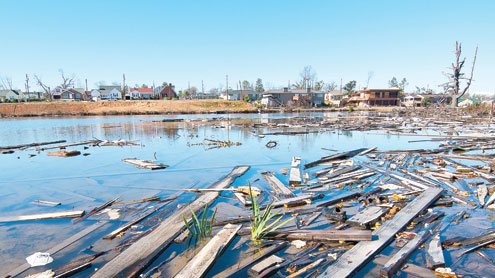The Tuscaloosa City Council passed a zoning ordinance unanimously Tuesday night that will create new mixed zones in areas impacted by the April 27 tornado. The vote followed a public hearing that was attended by a few dozen local citizens and activists.
The vote was the culmination of months of work by members of the council and their staffs. Before Tuesday’s meeting, the Council hosted more than half a dozen community meetings that saw an attendance of approximately 2,000 residents.
Tuscaloosa Mayor Walt Maddox said he personally spoke to dozens of business leaders and other citizens during the run up to the vote.
“I have invested a lot of time and energy because I felt it was so important to the future of this city,” Maddox said after the meeting.
Robert Parsons, a Tuscaloosa property owner, supported the change but did express a concern with the Council during the hearing.
“I just want to make sure that we make infrastructure improvements,” Parson said. “For example, to make sure that the traffic doesn’t get bottled up in the intersections along 15th Street. But overall, good work.”
The new ordinance allows developers to construct both residential and commercial buildings in the same area with a few exceptions.
Businesses such as tobacco shops, check cashing stores, pawn shops, tattoo and body piercing shops, payday loan businesses, minor vehicle repair shops and sexually oriented or adult-based establishments will not be allowed within 300 feet of residential properties.
Additionally, those businesses will only be allowed one per block per the ordinance.
Though sometimes a controversial issue, mixed-use zoning has been embraced by the Council in the aftermath of disaster.
“I think mixed-use is the best way to go because for too long, our codes have been designed to separate usage,” Maddox said. “When you separate usage, generally over a life cycle it will cause a deterioration of neighborhoods or on the commercial side.”
George Harris is a resident who has lived in four different places in Forest Lake. The tornado took three of those four homes, but Harris is optimistic.
“I’m going to miss a lot of the stuff that was there but I’m looking forward to coming back better and I think this is a plan that is a step in the right direction,” he said.
Last week the city council approved a $46,000 engineering contract that will aid in removing the last of the vegetative debris from the Forest Lake neighborhood.
The new codes specifically impact the areas of 10th Avenue from roughly 26th Street to 35th Street, McFarland Boulevard and 15th Street and University Boulevard East in the Alberta neighborhood.
“I think its going to improve the ability to have things like pedestrian walkways and other opportunities, so overall I believe this is our best chance to raise the bar in terms of quality of life,” Maddox said.
Maddox said the city’s zoning ordinances were based off legislation from 1972, and a time for change has come saying, “a lot has changed since then, we needed a modern urban policy and this gives us that.”
However, Maddox said he understands this plan is only the next step on a long road to recovery, and there are “still many miles to go in this marathon.”







